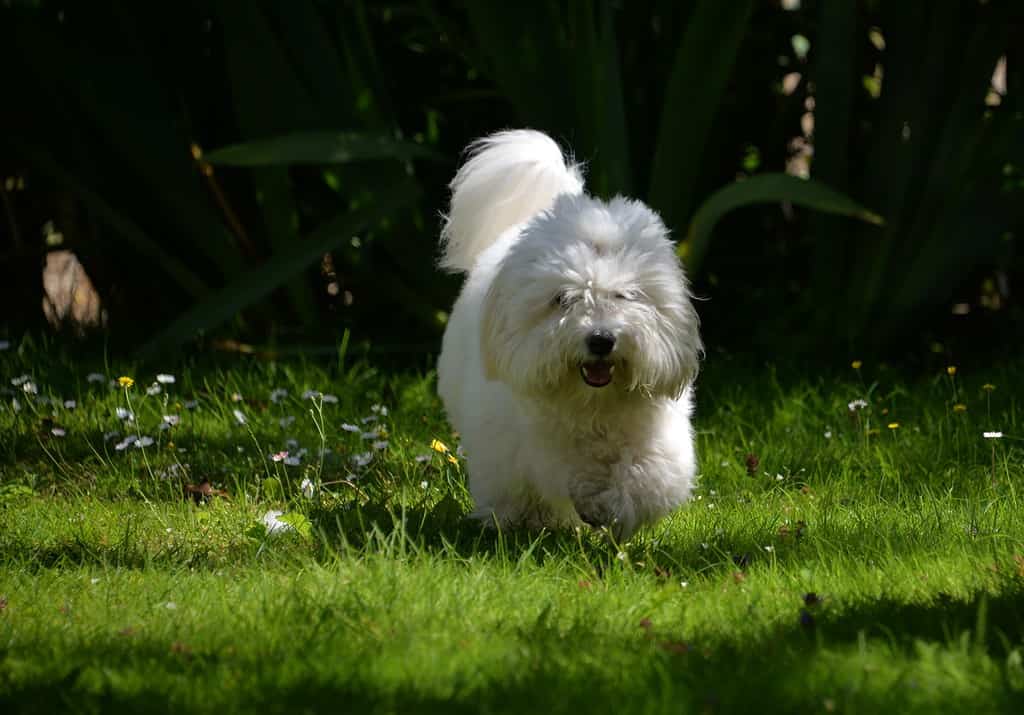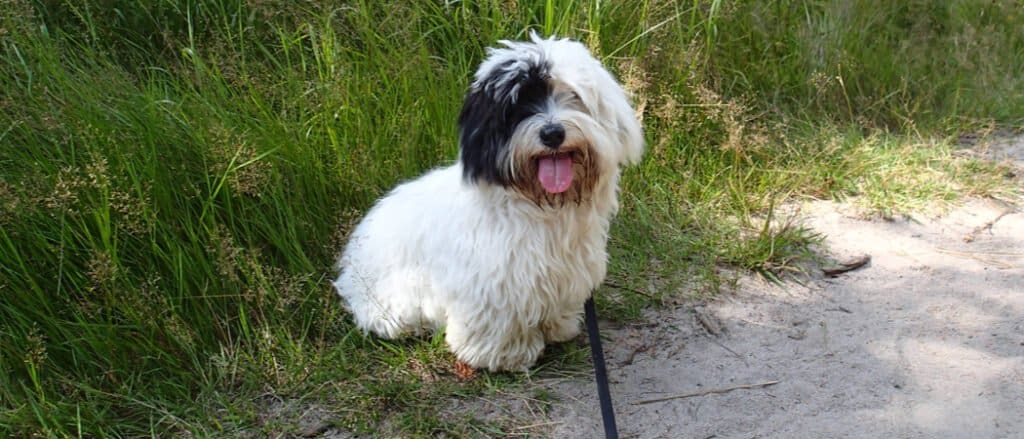Coton de Tulears are somewhat of a royal breed, rarer than most and well-beloved by breed enthusiasts. They have a long history, with their ancestors likely dating back to the 16th century. A recognized breed throughout the world, there are specific standards Coton de Tulears will often present, especially in the case of dogs bred specifically for dog shows. This includes specific colors and markings. Below, learn more about the Coton de Tulear colors and whether or not they have markings. Plus, learn more about non-standard colors and markings that this remarkable little breed might sport.
Coton De Tulear Colors

The most common Coton de Tulear color is white.
©Sbrandner, CC BY-SA 4.0 <https://creativecommons.org/licenses/by-sa/4.0>, via Wikimedia Commons – Original / License
From their fur color to their nose, many breed clubs around the world are specific about how a Coton de Tulear should look. This breed is known for its long, fluffy coat. However, the only color that their coat could be was white. In fact, many breed clubs focused on show dogs considered black anywhere on the main part of their body to be a disqualification.
Oftentimes, especially in adults of the breed, it is likely that some tan or beige colorations will be present throughout the coat. However, these are subtle and should not make the Coton de Tulear look anything but like a fluffy, white pup.
As far as other Coton de Tulear colors go, they should sport healthy, black noses and eyes that are brown or black. In the case of dog shows, non-dark eyes can be a call for point deductions.
Do Coton De Tulears Have Any Markings?
On a standard level, Coton de Tulears can have two main types of markings. These will often vary based on the age of your puppy. When your Coton de Tulear is still young, typically under the age of one year, they can sport a variety of darker colors. These include browns and even some instances of black. However, as they mature, their coat should be notably white, lacking any other major hues.
In exception to this, however, in adulthood, Coton de Tulears can have yellow or gray markings. These often appear on the face, usually under or near the ears and side of the head.
Non-Breed Standard Markings and Coton De Tulear Colors

There are some markings and colors that may not be standard in the Coton de Tulear but still occur.
©pablo11/Shutterstock.com
When it comes to breed standards, standardized colors and markings are typically only important if you plan on showing your dog. So long as you ensure that you are purchasing from a reputable and ethical breeder, a Coton de Tulear that has a different color or marking can still make the perfect pet for you and your family.
Solid black Coton de Tulears are rare. However, they are often stillborn healthy and happy, although they won’t be able to compete in any dog shows focused on standard Coton de Tulear colors. This breed can also sport tri-color marks or even white marks, though the latter isn’t seen often in individuals sporting solid white coats.
Breed Profile: Coton De Tulear
The Coton de Tulear is named for Toliara, which was previously named Tuléar. This is a seaport sea located in Madagascar, along the southwestern coast.
The exact history of the Coton de Tulear breed is not known. However, although spotty, historians and breed enthusiasts do have an overall idea of where and how this breed originated. The national dog of Madagascar, the Coton de Tulear, grew in popularity on this island country. There are many different origin stories for this breed’s arrival on the island. Some consider it to be a mixed breed originating from a visiting dog mating with one on the island. Others believed that the dogs arrived after swimming on the island.
While the exact origin of the Coton de Tulear may not be known, their role on the island is. These small dogs possess little prey drive, with a small stature and little strength. As a result, they were never used as hunting dogs. Instead, since the beginning of their history, the Coton de Tulear has been a companion breed. In fact, they were often considered to be of high class, belonging often to nobles and elites in the region.
The date of this dog receiving official breed status varies based on the region. In France, the Coton de Tulear became an officially recognized breed in the late 1900s. For the United States, however, it took until 2014 for the Coton de Tulear to become a breed recognized by the American Kennel Club.
The Coton de Tulear is a friendly, playful breed that loves to be around its owners. They are high maintenance in terms of grooming, with daily brushing and combing needed.
The photo featured at the top of this post is © iStock.com/Bigandt_Photography
Ready to discover the top 10 cutest dog breeds in the entire world?
How about the fastest dogs, the largest dogs and those that are -- quite frankly -- just the kindest dogs on the planet? Each day, AZ Animals sends out lists just like this to our thousands of email subscribers. And the best part? It's FREE. Join today by entering your email below.
Thank you for reading! Have some feedback for us? Contact the AZ Animals editorial team.







